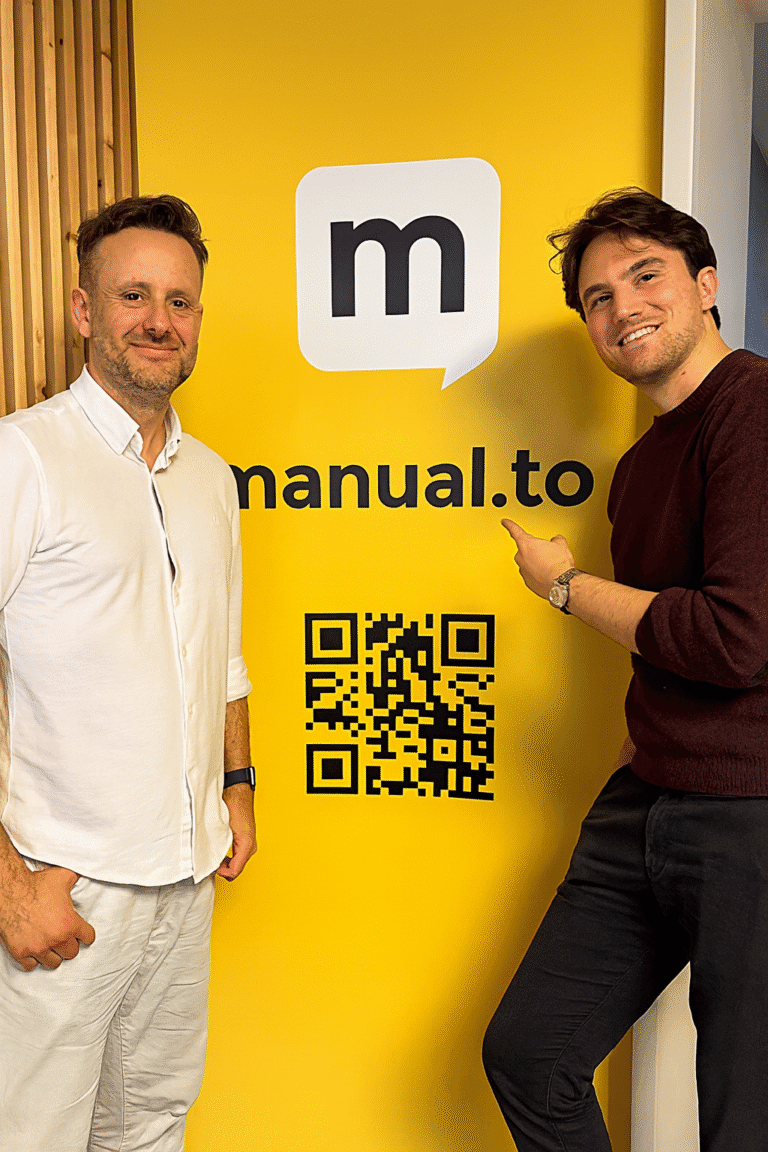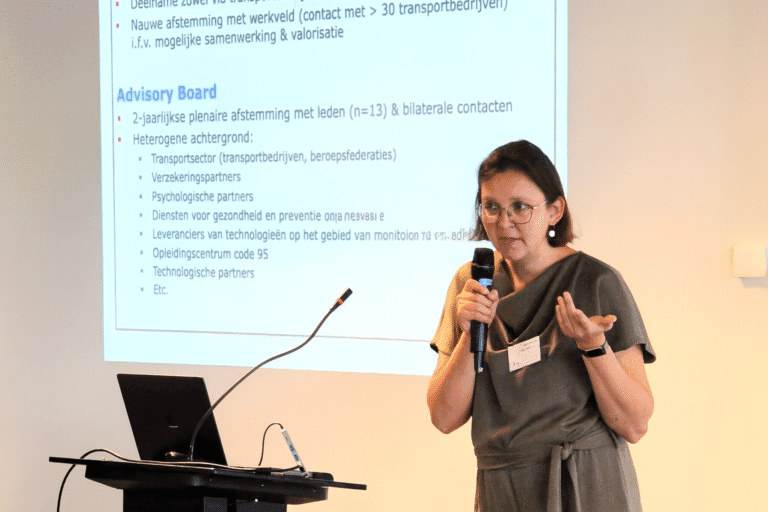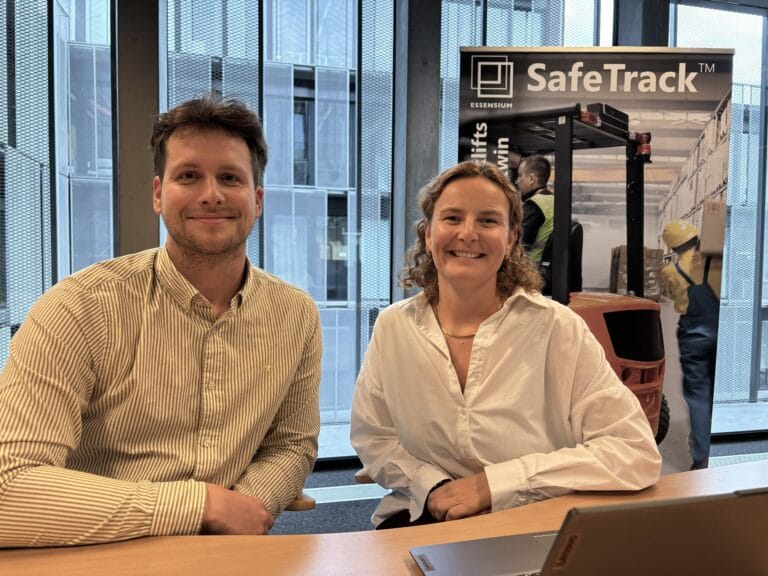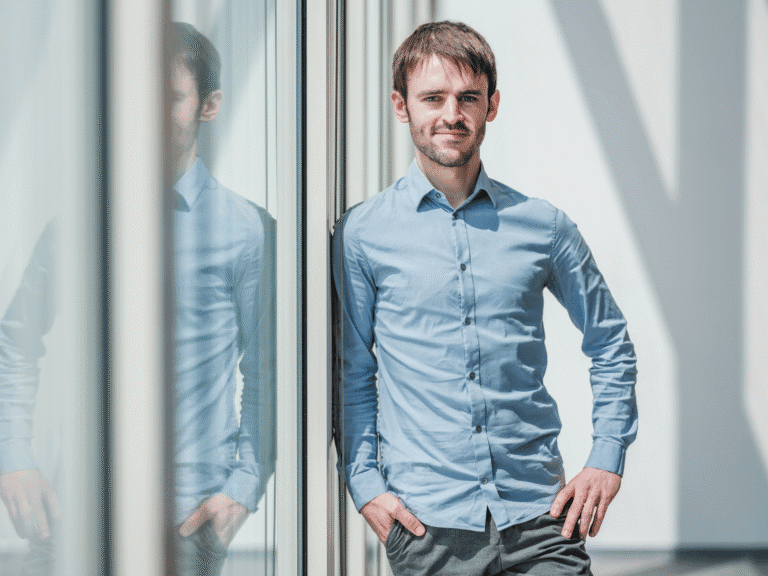Wouter Martens (LogiTwin): “Many warehouse managers struggle with their space management”
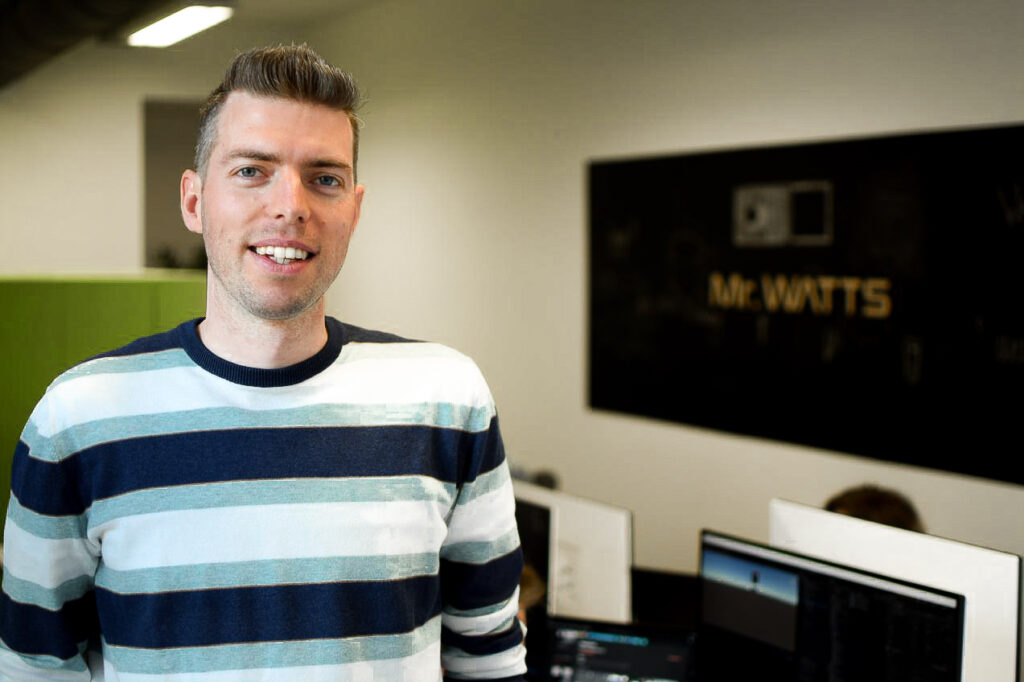
LogiTwin became Start2Scale-up Partner of Log!Ville about six months ago. This part of Mr Watts focuses on digital twins and the solutions they provide for the logistics sector. “Many warehouse managers struggle with their ‘space management’. They don’t know exactly and in real time what is where, especially when it comes to dynamic zones. With a digital twin, you can significantly optimise workflows,” says co-founder and CTO Wouter Martens. He explains to us how and why.
How and when did Mr. Watts and LogiTwin come into being?
Mr. Watts was founded in March 2020, just before the corona crisis, by Niels Leunen and myself. Niels had started icapps, a developer of applications and software for mobile devices, 11 years earlier. That company grew quickly and soon had 125 employees. It was no longer a startup, but a scale-up, which meant very different challenges. I was CTO of the company at the time. Icapps was sold to the Cronos group, allowing Niels and I to venture out on a new adventure and found Mr. Watts, with the backing of Cronos.
Mr. Watts originally focused on Augmented Reality and Virtual Reality in a professional environment to optimise workflows. For two years, we were able to realise very nice projects for top companies like IKEA, but they got stuck at the Proof of Concepts stage. Pilots are nice, but we wanted to go a step further and create real applications with added value.
So we focused on ‘spatial computing’ (ed: using technologies such as AR and VR to integrate digital information into the physical world). We saw more future in connecting digital information with machines, processes and logistics operations; and more specifically digital twins, which we had already used in a number of PoCs. Thus, LogiTwin was born as part of Mr Watts.
What is a digital twin? And why is it valuable to build one?
A digital twin is a virtual copy of ‘something in the physical world’. This can be a machine, a production line, an entire business park… but also a warehouse. The purpose of a digital twin is that it can behave exactly like its physical counterpart, thanks to all kinds of real-time data sources, for instance. Such a virtual clone of reality is particularly interesting for monitoring all kinds of things. One can also test and simulate changes or optimisations virtually before applying them in the real world. And since such a virtual model of reality can also be interpreted perfectly well by Artificial Intelligence systems, you can start supporting such functionalities in a very smart way.
What does LogiTwin focus on?
We optimise logistics and warehouse operations by deploying digital twins that enable real-time visibility, predictive analytics and data-driven decision-making. We always start from the company’s problems and study different methodologies to solve them. Often, a digital twin can provide a solution because many warehouse managers struggle with their ‘space management’, the management of available storage space.
Many companies have a Warehouse Management System (WMS) but do not know exactly and in real time what is where, especially when it comes to so-called ‘dynamic zones’. At Medi-Market, one of our customers, for example, these are zones where seasonal products are on the shelves. Nasal sprays in winter and sunscreens in summer, for example.
Why does a WMS struggle with dynamic storage zones?
Managing storage zones for seasonal products or for goods with fast turnover rates requires constant adjustments to the stock layout and picking process. This can be a challenge for the WMS to plan and manage accurately.
A digital twin, on the other hand, has a ‘physical context’: we can link the 3D geometry of the warehouse with the location data of the WMS. The WMS on its own does not have that context, which makes dynamic space management much more difficult. That really is a ‘key differentiator’.
So by linking the WMS to a digital twin, you not only get better insights to optimise workflows – which you then apply in the physical world – but also more efficient order picking with more logical sequences. You can also minimise ’empty runs’.
A digital twin also has the advantage of being able to run simulations in a 3D context. In other words, location data provided by a WMS can be integrated into a 3D model. This offers the possibility of not only running simulations but also better monitoring, so that – in both cases – you can make better decisions.
Can you elaborate on that?
As a monitoring tool, you use a digital twin to perform analyses and gain contextual insights. Using real-time data, you can monitor what is happening: where are the products at the moment? Where are my forklifts driving? You can use historical data to analyse the operation of your warehouse and determine where there is the most driving, where the hot zones are, where bottlenecks often occur, and so on. Based on that analysis, you can decide, for example, which zone(s) are best to move the fast movers to.
As a simulation tool, the digital twin works differently. You use effective (historical) data in a fictitious environment. To take the example of Medi-Market: that company is growing like cabbage. Its storage capacity needs to be increased substantially. How can you optimally organise and partition the new warehouse? You can train an algorithm with AI to arrive at a proposal of a fictitious layout based on that data, simulating and optimising travel times in advance.
How many people are you working with today?
Within Mr Watts and LogiTwin, we work with 10 colleagues. However, the fact that we belong to the Cronos family allows us to call on other companies in its ‘Bluu Cluster’, which focuses on Microsoft technology. So we can enjoy the endeavours of 250 people and their knowledge in all kinds of areas, such as AI. We have know-how in this area ourselves, but if specific AI expertise is needed, we can turn to them. So it is actually a co-creation story. By the way, we are technology agnostic. We initially look at Microsoft products but can still apply other technologies if that is better.
So you put a lot of effort into co-creation?
Absolutely. By collaborating with other companies, we can bring together more data streams, allowing us to make corelations in the digital twin that can speed up and improve entire processes.
Data coming from a Real Time Localisation System can be a particularly interesting source of information to manage a warehouse or stocks within a digital twin. An RTLS is, for example, BlooLoc’s YouBeeEye system. That knows at all times where the forklifts are and where they have picked up or put down the load. For example, if we get real-time data of the zones where the forklifts are currently working, we can decide to send cleaning robots to another zone because it is quieter there.
In addition, we have already set up a co-creation project with BlooLoc, albeit not in the field of digital twins. Mr Watts is also active in the field of AI integration. IKEA wants to reduce the number of damage incidents when using forklifts in the warehouse. The forklifts are equipped with cameras by BlooLoc. We link that hardware with our computer vision software to aurally notify the driver when he accidentally picks up a package badly.
BlooLoc is also a partner of Log!Ville. Is it thanks to Log!Ville that you started working together?
It is indeed. During an event in Niel, we got talking and exchanged thoughts on the possibilities of RTLS. Two days later, as part of an IKEA project we were working on at the time, we were discussing how we could combine BlooLoc’s sensors with our AI software to reduce damage claims.
LogiTwin has been a Log!Ville partner for six months. What has been your experience?
We are really excited about this partnership. Not only because of the contacts with other partners – witness the cooperation with BlooLoc – but also with potential customers. Several visitors scanned the QR code in our booth, which generated quite a lot of lead generation. For instance, we are already in talks with several parties – including some big names in logistics.
Before we became a partner, we already had many contacts with VIL. Very soon after starting LogiTwin, we had come to them to get better insights about the sector. That’s how we came to Log!Ville and recognised its leverage in terms of ‘targeted marketing’.
If you had to make one suggestion to improve Log!Ville, what would it be?
Make Log!Ville more visible on the international scene. You are too modest. Log!Ville may have the ambition to become a ‘key player’ internationally. Logistic managers from IKEA from several European countries recently visited us for inspiration. They told us they were very impressed. Other international companies should also be tapped to visit, as Log!Ville is one of a kind.
